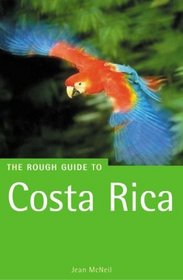Search -
The Rough Guide Costa Rica, Third Edition
The Rough Guide Costa Rica Third Edition
Author:
INTRODUCTION Hemmed in between the Pacific and Atlantic oceans near the narrowest point of the Central American isthmus, the tiny republic of Costa Rica is often pictured as an oasis of political stability in the midst of a turbulent region. This democratic and prosperous nation is also one of the most biodiverse areas on the planet, an ecologi... more »
Author:
INTRODUCTION Hemmed in between the Pacific and Atlantic oceans near the narrowest point of the Central American isthmus, the tiny republic of Costa Rica is often pictured as an oasis of political stability in the midst of a turbulent region. This democratic and prosperous nation is also one of the most biodiverse areas on the planet, an ecologi... more »
ISBN-13: 9781858287133
ISBN-10: 1858287138
Publication Date: 1/7/2002
Pages: 456
Edition: 3rd
Rating: ?
ISBN-10: 1858287138
Publication Date: 1/7/2002
Pages: 456
Edition: 3rd
Rating: ?
0 stars, based on 0 rating
Genres:
- History >> Americas >> Central America >> Costa Rica
- History >> Americas >> Central America >> General
- Travel >> Reference >> Guidebooks
- Travel >> Travel Writing
- Travel >> Guidebook Series >> Rough Guide
- Travel >> Latin America >> Central America >> Costa Rica
- Travel >> Latin America >> Central America >> General





